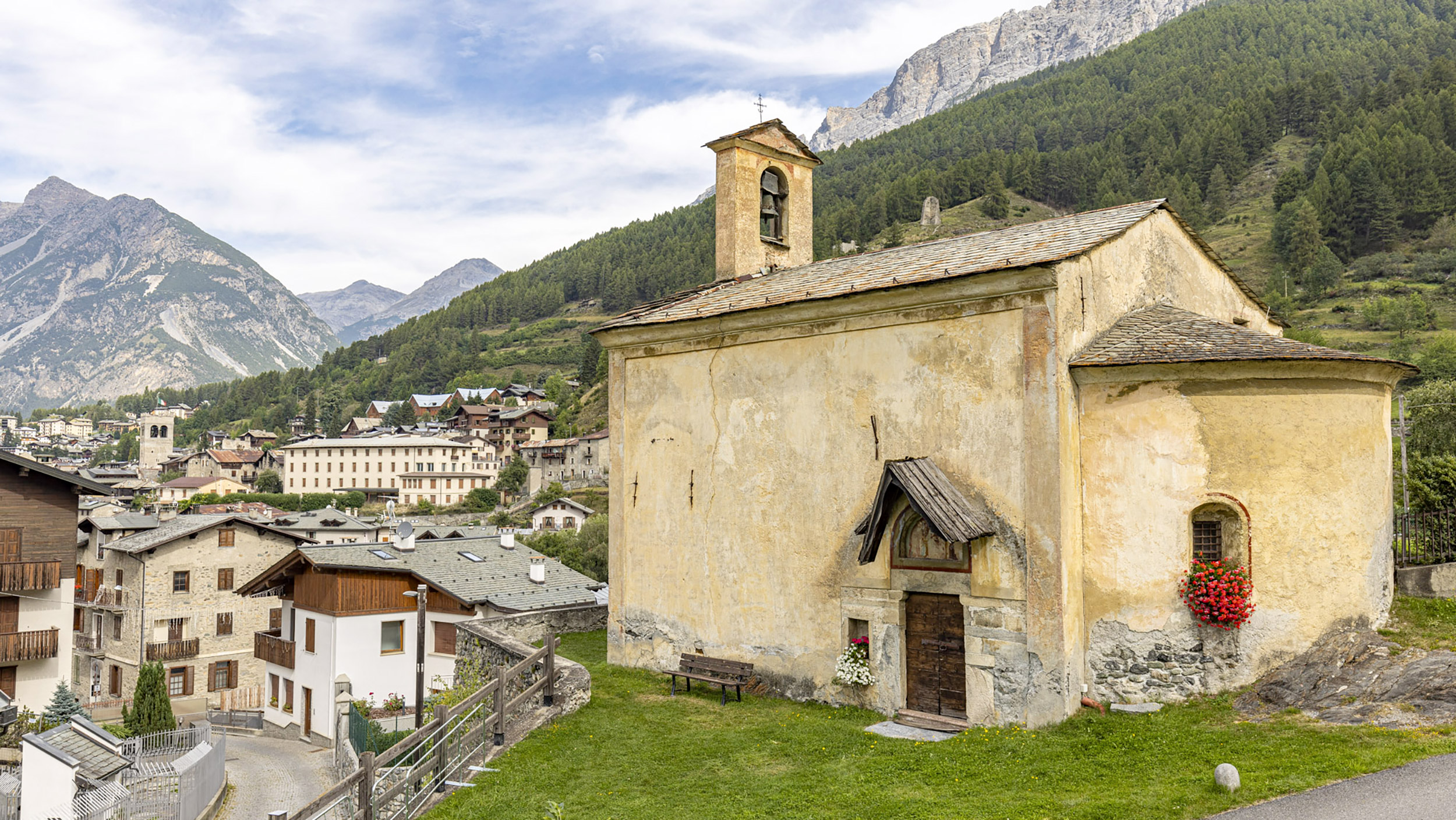Via Sassello, 23032 Bormio SO
Bormio is subdivided into five wards, of which only Combo lies on the left bank of the Frodolfo River, which once provided irrigation for crops on the Alute plain.
During the last century, houses, hotels, and ski lifts were built at the foot of the slopes but the historical center still preserves its picturesque medieval layout, characterized by lordly manors, many typical farmhouses with their stalls and haymows, and the ever-present signs of the sacred along the public street in the form of crucifixes, votive frescoes, and aediculae.
In the heart of Combo stands the 14th-century church of Sant’Antonio Abate, also known as Santo Crocifisso for the presence of a miraculous wooden cross carried in ritual processions.
The church of the Madonna del Sassello is perched on a rocky outcrop overlooking the ward. Its tiny grassy parvis affords a splendid view of Bormio and Monte Réit, the source of hot springs famed since Roman times. Built in 1398 by a devout Bormino and raised in height in 1684, it has always been under private patronage. The faded haloed figures on the inner wall of the curved apse testify to its late medieval origins: they are the seated Apostles, a fitting backdrop for the venerable double-winged altarpiece now kept in the Museo Civico of Bormio.
The main altar features a painting of The Visitation (1652); the church was once dedicated to this story from the Gospel of Luke. Although the work embodies deep theological meaning, people also saw in it a simple loving encounter between two expecting mothers. Women came to the Chiesa del Sassello to pray, confiding their own maternal hopes to Mary and Elisabeth, the latter having given birth at an advanced age.
The fervor of this worship is evidenced by the many votive offerings hanging on the walls. Thirty-three plaques dating from the 17th to the 19th century provide a wealth of details about life in Bormio in that period. There is also a lovely small patterned and painted leather altarpiece featuring a medallion with the Madonna and Child with Saints Francis and Nicholas of Tolentino.
After you leave the church, the Cammino Mariano leads down a narrow street to the Frodolfo, where the waterwheel of an old sawmill testifies to the artisanal enterprises that once used the power of the river. You then follow the bicycle path along the Frodolfo into Valfurva, the stony riverbed evoking the impetus of the tumultuous spring surges.







